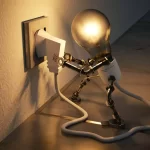You are Creative!
What was the last dream you dreamt of? Have you ever wondered if your dreams could contribute to the world’s GDP? They could be woven into an exciting story, painted on a canvas, or made into a short film. Albrecht Dürer, a German Renaissance artist, painted his masterpiece “Dream Vision” in 1525 after dreaming about the Apocalypse. The painting depicts a landscape with scattered trees, instilling fear of destruction in the real world. The original painting is believed to fetch $50 million at the market, but a reproduction of the painting can be purchased online for over $600.
This is an inspiring example of how the value of art can vary depending on its authenticity. The original painting is a unique and irreplaceable work of art, while the reproduction is simply a copy. However, the reproduction can still be appreciated for its beauty and artistic merit.
The fact that the reproduction of paintings is still valuable suggests there is a market for art inspired by dreams and imagination. This is something that we all have the power to do, so why not consider monetizing it?
The above example also suggests that creativity has contributed to the global economy throughout history, even when we were unaware of it. We have continued to create, and the creative economy has continued to evolve. The creative economy is an evolving concept with no single definition. Simply put, it is a way to create work and wealth by exploiting information or knowledge, contributing to the global GDP.
The Indian Creative Economy Unveiled
India’s creative economy suffered a 39% recession in the pre-COVID period, falling from ₹50,000 crore in 2020 to ₹30,440 crore in 2021. However, the emergence of social media in the succeeding year enabled artists of all levels to break through and connect with their audience. They were also able to monetise their skills more easily, resulting in the overall growth of the art sector. This led to job creation, exports, tourism, and social development, making the creative economy the fastest-growing and the youngest.
India’s creative economy saw a sudden surge in its contribution to the global GDP in 2023. Creative industries now contribute to 3.1% of global GDP, giving developing nations like India a chance to enter high-growth sectors of the global economy. Creative industries are estimated to contribute about 8% of India’s employment, much higher than the corresponding share in Turkey, Mexico, Australia, etc. Undoubtedly, creativity is the driving force behind innovation and economic growth.
Agencies are Booming Creativity!
Every startup founder dreams of turning their business into an enterprise. We all want our businesses to stand out from the competition. But how do we do it? With creativity and innovation!
Creativity is undoubtedly reshaping the business landscape. In a competitive market, companies with the same line of products are constantly looking for unique ideas to attract customers and increase their engagement. To ensure this, businesses are increasingly turning to creative agencies. These agencies offer a range of services, from branding and design to marketing and advertising, that can help businesses reach their target audience and achieve their goals.
These agencies generate income by charging their clients for their services. The amount of income an agency generates varies depending on the size and scope of the agency, the type of work they do, and their target clients. However, the creative services industry in India is expected to grow at a CAGR of 12% over the next five years, which suggests that creative agencies are well-positioned to generate significant income in the future.
Aage aage badta hai India, Amul dhood peeta hai India!
As you read it, you sing it, right? Conceptualised by FCB Ulka, this ad has left an impression on our hearts. The moment we listen to the jingle, the moment we start humming or singing it aloud. Have you ever thought about the efforts put into these campaigns to make them impactful for a lifetime? Advertising agencies are always all hands on deck!
Advertising agencies do not just aim to sell products- they create lasting impressions, capture hearts, and become an integral part of the cultural fabric through their unique campaigns. The industry has come a long way and has become the third largest contributor in the world of advertising, after China and the US, according to Statista 2023.
The Indian advertising industry is booming. In 2022, it was valued at over 857 billion Indian rupees and is projected to grow to more than a trillion rupees by 2024. This growth is driven by the country’s rapid digitisation, with digital advertising now accounting for more than half of the total ad spend.
From Budding Artists to Professionals- No more dancing in the mirror or singing in the shower!
Not just agencies and businesses but also artists of all kinds, from musicians and writers to filmmakers and other creatives, can now showcase their talents on social media platforms. These online platforms allow budding artists to turn their passion into a profession. They have been able to get their work noticed by major publishers, record labels, and production companies. They have also been able to connect with fans and collaborators from all over the world. All of this is done by majorly using Instagram, Facebook, Tik-Tok and YouTube.
Facebook and Instagram are the two biggest social media platforms in terms of revenue. Facebook has been leading the charge since 2010, and both platforms are now the core pillars of Meta’s offering. This makes sense, given that they have been around since the initial social media boom.
Despite Facebook and Instagram generating the most revenue, TikTok and YouTube are the top platforms for creators to make money. According to a report by Epidemic Sound, 30% of monetizing creators said that TikTok is their top platform for generating income, followed by YouTube at 25.8%, Facebook at 16.5%, Twitter at 13.1%, and Instagram at 7.1%
Ultimately, the best way to make money on social media is to find a platform that is a good fit for the respective content and audience. Artists should also focus on creating high-quality content that will engage their audience. This will surely help them follow the right way to make money on social media.
Challenges Faced by Artists in the Creative Economy
Every coin has two sides, and so does the creative economy. Artists and artisans face numerous challenges when it comes to economic sustainability, market access, and the preservation of traditional art forms in a rapidly changing society.
Here are some of the specific challenges that artists face in India-
- Limited opportunities:
There are often limited opportunities for artists to showcase and sell their work, especially for those based outside major cities. This can be due to a lack of galleries, museums, and other cultural institutions, as well as a lack of funding for cultural events.
- High costs:
The cost of marketing and promoting one’s work can be high, especially for artists just starting out. This can make it difficult for them to reach a wider audience and gain exposure.
- Competition:
The creative economy is a highly competitive field, and many talented artists are vying for the same opportunities. This can make it difficult for artists to stand out and get noticed.
- Digital piracy:
The digital age has made it easier for artists to share their work with the world, but it has also made it easier for their work to be pirated. This can deprive artists of the income they need to support their work.
Crime in the art world
Crimes in the art world, such as art theft, copyright infringement, forgery, fraud, and illicit trafficking, pose a serious threat to cultural heritage. These crimes can cause financial harm, erode public trust, and make it difficult to verify the authenticity of artworks.
Significant Challenges in the Creative Economy of India-
- Lack of infrastructure:
The creative economy requires physical infrastructures, such as galleries, museums, performance spaces, and recording studios. These facilities are essential for artists to showcase and sell their work, and they also help to attract tourists and investment. However, India lacks adequate infrastructure in many parts of the country, which limits the opportunities for artists.
- Lack of skilled labour:
The creative economy also requires a skilled workforce, such as designers, animators, filmmakers, and musicians. However, India faces a shortage of skilled labour in these areas. This is due to a number of factors, such as the lack of vocational training programs and the brain drain of skilled workers in other countries.
- Lack of awareness regarding Intellectual Property Rights–
Many people in India are unaware of their IPR rights or do not know how to enforce them. This can make them vulnerable to IPR infringement.
Way ahead
- Investing in infrastructure:
The government can invest in building new galleries, museums, performance spaces, and recording studios. This will provide artists with the facilities to showcase and sell their work.
- Promoting vocational training:
The government can promote vocational training programs in design, animation, film, and music. This will help to create a skilled workforce for the creative economy.
- Attracting foreign investment:
The government can attract foreign investment in the creative economy. This will help to bring in new skills and expertise, and it will also help to create jobs.
Let us be Creators till we die!
India has a significant scope to increase the value of its creative economy. The country needs to explore its untapped potential. Let us all keep creating and contributing to the global GDP. Next time you see a dream, remember it may not be just a dream but a creative idea.
Rightly said by our honourable Prime Minister Narendra Modi, India has a lot of stories to explore and poses immense potential to become the world’s creative hub.
- Harshleen Israni
-
Content that rocks the world
06 November, 2020 -
Design: Bringing Ideas to Life
12 November, 2020 -
Whassup Bud: One of Budweisers’ Evergreen Television Ad Campaign
20 November, 2020 -
Brands must be Gods
27 November, 2020 -
The Deffective Dictionary
08 January, 2021





